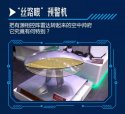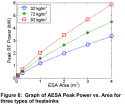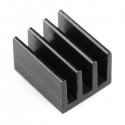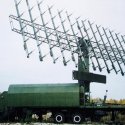By analogy, AESA would imply a non-rotating dome.
Interesting divergence in approach. The US favors a larger single antenna in a rotating dome, over 3 smaller 120d view AESAs.
What has me really intrigued is why the US is still using a PESA architecture for APY-9 on E-2D, even though the radar is fully digital with a solid state transmitter and receiver. My hunch is that it has to do with weight/CG/momentum and cooling, which is easier to deal with in a PESA design.
Sorry for digressing.
Certainly won't be about weight, as PESA tends to weigh more. A rotating mass with gyroscopic effects isn't good for CG and momentum/ Cooling should not be an issue with AESA since you should get ventilated by the airflow of the plane going forward, while the airflow you get from a rotating disk is neglible.

The reason why it turns around is that the array is UHF. The wavelength is so long, it can only consist of a few elements set in a line. It won't matter if the array is an AESA or a PESA. It is really an array of Yagis, 8 elements on each side. If you like something similar in concept try the Type 517M radar on the 052D.

From a space perspective, a PESA with a single transmitter for all is probably most efficient in space. Being UHF, and keeping in mind the space needed between each element, you need the most cross section area of the disk as possible so the array needs to be at the center of the disk. To steer electronically, and this will only go sideways, the phase shift would have to be a delay in the transmit, so some elements would be sequentially delayed, and that causes the beam to steer. But with only one side, to get a full 360 degrees you need to rotate it.
The artwork --- not official --- regarding the KJ-600 tends to portray this delta that points to an AESA (or PESA) with three sides.

This image below however, suggests a dual sided array. Compared to how small the cross section area of the array is available if you do a triangular configuration vs. a dual sided, a triple sided would not allow as many elements as you have with a dual side if you are using UHF. You probably have to go down to L-band which will greatly increase the number of elements and offer greater angular resolution, but UHF is going to be more stealth proof.
Fuzzy image on the KJ-600 prototype suggests a single or dual sided disk if the coloring is of any indication.

















